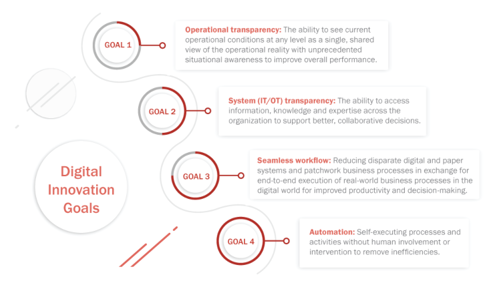2020 AFPM Summit: Digital resilience strategies protect against unforeseen operational disturbances like COVID-19, oil price plunge
Digital resilience strategies protect against unforeseen operational disturbances like COVID-19, oil price plunge
SCOTT LEHMANN, Sphera
For operational risk management, being resilient means being able to continue to operations in the best of times, and the not-so great times, as well. It takes mettle, it takes planning, it takes digital solutions to ensure consistency and productivity, and, ultimately, operational excellence.
Digital resilience is really about an organization’s ability to use their operating model to either maintain or optimize their safe operations during unexpected business shocks. We have seen a couple of those lately with COVID-19 and the precipitous drop in oil prices.
Before all the uncertainty began, organizations likely would have had some thoughts on how to protect their operations in such an unlikely situation, but more likely than not would not have had digital transformation initiatives as part of their organization’s DNA. Some did, but many others did not.
A plan in place. Had more organizations embraced digital resilience strategies, we likely would have seen less of a shock manifest itself throughout industry when the pandemic picked up steam or oil prices ran out of steam. Regardless of the way that a threat or shock manifests itself, organizations must ensure that they have the built-in capability to be agile, scalable and flexible to ensure their resilience, even in turbulent times. A recent Accenture survey noted that 93% of companies say their very existence is jeopardized by operating models that cannot keep pace. Digital resilience is about ensuring that your operating model can respond to anything out of the ordinary that comes your way, whether it is a pandemic, low oil prices or anything else. (Let’s hope the “anything else” doesn’t include a “murder” hornet infestation!)
Hazards ahead. Hazardous industries, such as oil and gas and petrochemicals, are not known for their speed of implementation or, in many cases, for being agile when it comes to management of change. However, we have seen with COVID-19 and the drop in oil prices that these industries were able to make big changes in just a few weeks to cope with the situation. This shows how even large organizations can accelerate their operational strategies quickly when something unexpected occurs, if people in the organization come together and focus on the big objectives and how to respond to them.
Of course, that also begs the question: What could have been done to avoid such a scramble? If organizations had tackled some of these issues earlier, they would have been in a much better position. This is why digital resilience is so important. Going forward, as companies move beyond recovery, there are signs that many organizations are beginning to gravitate to their natural state of being. While a return to normalcy would be a welcome respite from what we have experienced over the past several months, it is also an opportunity to rethink operating models around how companies mitigate risk throughout their supply chains (FIG. 1). That approach must be digitally driven for optimal results.

FIG. 1. As companies move beyond recovery, they must rethink their operating models around how to mitigate risk throughout their supply chains. (Courtesy of Sphera and Gartner.)
True resilience is not about smoothing out the edges of inefficient processes; it is a soul-searching examination of operations and a reimagining of how to improve through performance and optimization. It takes time. Companies that embark on their digital transformation journey now will see themselves in a better position in a few years as they progress through this data-driven revolution.
Digital initiatives continue. Even as companies have slashed IT funding and other tech-related projects, we see many of their core digital initiatives progress. They are that important. The focus might be a bit narrower, but they are still uber-important projects. It all comes back to digital resilience. Companies know that they must see these projects through to their fruition because what is tied to these initiatives is tangible value from improved decision-making, automation, productivity, transparency, etc.
Integrated risk management platforms bring together disparate processes, systems and data to provide that level of insight that has been previously unattainable. That level of transparency allows for better decisions throughout the organization, as opposed to different departments having different best practices and not sharing that data freely. The results? A holistic end-to-end view on operational risk.
For more information, visit www.sphera.com.
ABOUT THE AUTHOR

SCOTT LEHMANN is responsible for defining the market-driven direction, roadmap, vertical segmentation and delivery for Sphera’s ORM for operations solutions. He has more than 25 years of enterprise software experience in the U.S. and Europe with small, mid-size and large companies, as well as his own venture-backed startup. His focus is on empowering organizations to unlock the potential of digital transformation through forward-thinking software solutions to enable the journey to digital operations.






Comments